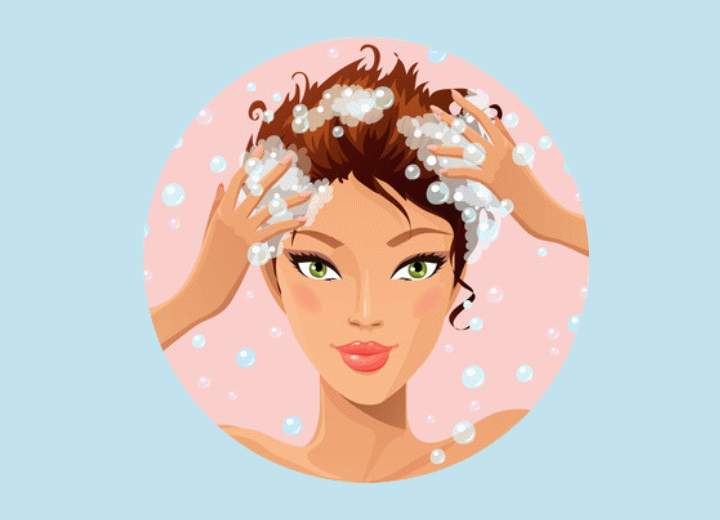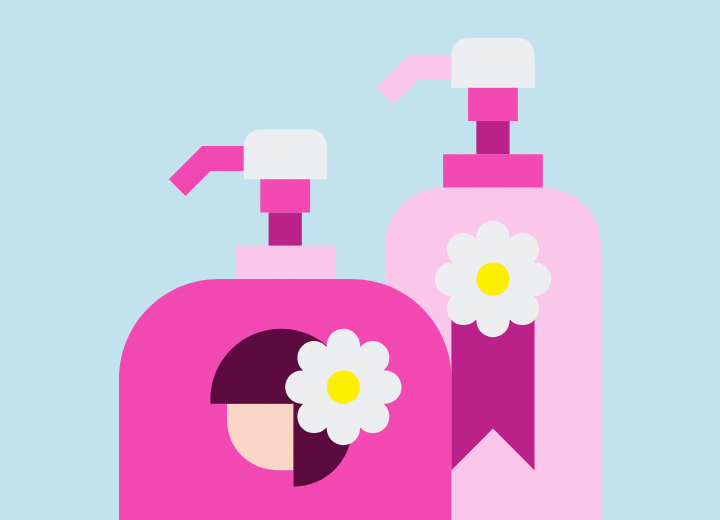How To Wash Your Hair

Who knew there was so much to know about washing your hair? Don't worry, we’ll "break" it all down so that any future "breakage" can be avoided while performing the cleansing task that we all do so often.
Whether you are a daily shampooer, an every other day washer, or the kind who cleanses when you feel like it, there is no doubt about it, washing your hair is a task that most of us do regularly. We’ll help to turn what can be a daunting task into a rather delightful one.
There's a lot to consider for proper shampooing, and we’d like to clarify and enlighten on the very important do's and don'ts of hair cleansing. For a task performed so often, there are many things one needs to be aware of. Before you even step into the shower to shampoo, getting the best results begins at home by researching which shampoos are pH balanced.
Shampoos are a hair product that is on one's hair more than any other single product. Some of you use it every single day. Having the proper pH shampoo makes ALL the difference in the world. Read on to begin the shift to fabulous locks and understand the top blunders people make while shampooing so you can stop yourself in your sudsy tracks.
Understanding Shampoo:
If you have an oily scalp, dehydrated stiff ends, or even thinning hair, a pH-balanced shampoo can help repair the hair and provide you with the dazzling hair you deserve. The pH scale is measured from 0-14. The pH scale is measured from 0 to 14. A shampoo that is more acidic will have a pH rating from 0 to 6.9, while a shampoo that is more alkaline will have a pH rating from 7.1 to 14.
The ideal pH level for shampoo is between 5.0 and 6.0, which is where our hair, skin, and nails exist. Unfortunately, most shampoos do not have published pH ratings, but we can provide some helpful tips to make the selection process smoother.
• For color-treated hair, choose a shampoo that contains components such as macadamia and coconut oil or vitamin E to add moisture. When terms like moisturizing or hydrating are mentioned, the pH levels are low (acidic).
• For oily hair, opt for a pH-balanced cleanser that contains panthenol.
• For dry hair, use a pH-balancing shampoo that contains fatty alcohols like cetyl alcohol.
• Shampoos can also be assessed using litmus paper. Simply dip a litmus paper into the shampoo and compare its color to the pH scale chart.

How Often to Shampoo:
Since hair varies and textures differ based on ethnicity, the frequency of shampoo usage also differs. One may be washing their hair more often than necessary. Ultimately, hair is a fiber that doesn't benefit greatly from excessive washing. Let's consider a wool fiber as an analogy. The more you launder it, the more damaged it becomes.
In general, longer, thicker, more processed, and curly hair tends to be drier, so these hair types can go longer periods between washes. If the scalp produces a lot of oil and more frequent shampooing is required, it's advisable to use an "everyday shampoo" that contains milder detergents.
Experts agree that shampooing twice a week should be sufficient. Of course, there are exceptions such as sweating heavily or using excessive styling products, which may require more frequent shampooing. In such cases, using a dry shampoo in between washes can be a suitable option.
Now that we have covered the important topics of identifying a pH balanced shampoo that suits you and determining the ideal frequency for hair washing, let's move on to discussing how to properly wash your hair.

How to Properly Wash Hair:
Hair is most delicate when wet, so it's important to handle it with care. Start by brushing the hair to ensure it's tangle-free before the shampooing process. Then, thoroughly wet the hair using warm water to open the cuticles and allow the shampoo and conditioner to penetrate and cleanse effectively.
Take a small amount of shampoo and apply it to the palm of your hand. Use your other hand to dip your fingers into the shampoo and gently dab it onto the scalp, focusing on the bangs area, around the ears, the nape of the neck, and the crown. Repeat this process until the scalp is well covered with the cleanser.
Next, use your fingertips to gently massage the scalp, paying special attention to the roots and ensuring the entire scalp is thoroughly scrubbed in a downward motion. If needed, add a little water for a better lather. Once this step is completed, you can choose to apply another small amount of shampoo (depending on how much dirt needs to be washed away). This time, spread the shampoo all over your hands first, then apply it to the rest of the hair, running the shampoo from top to bottom. Note that the ends of the hair usually don't require shampooing.
Continue reading ...